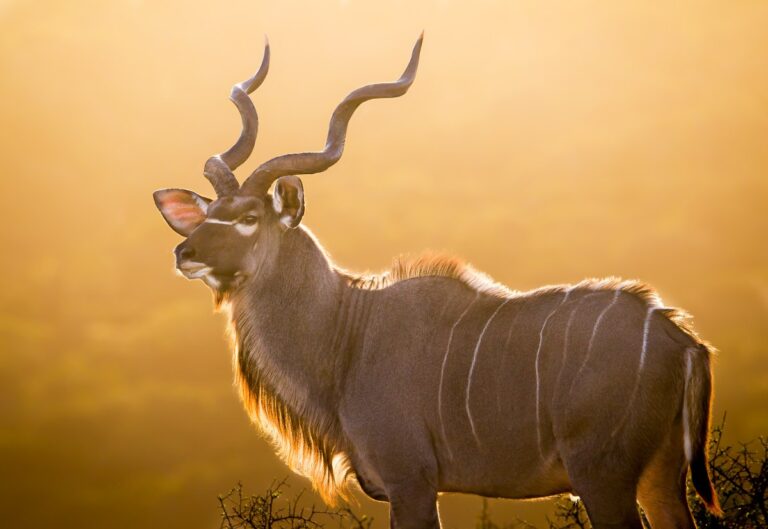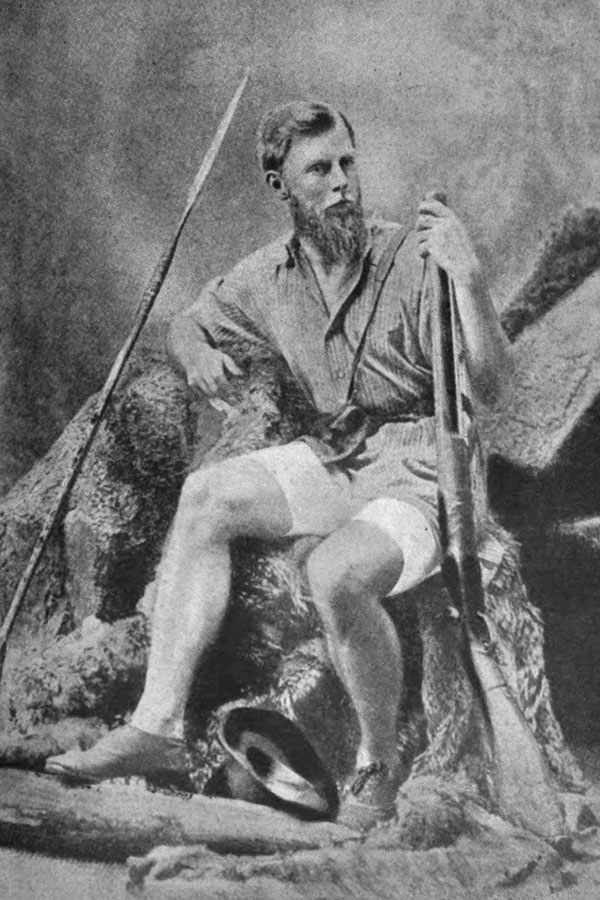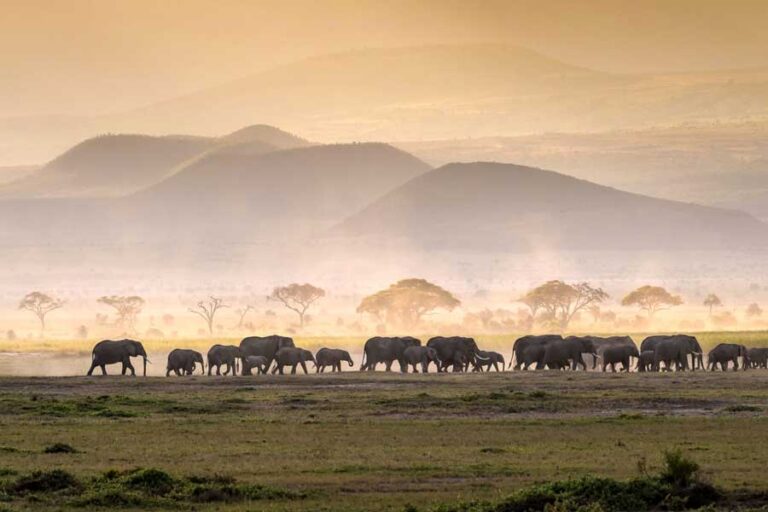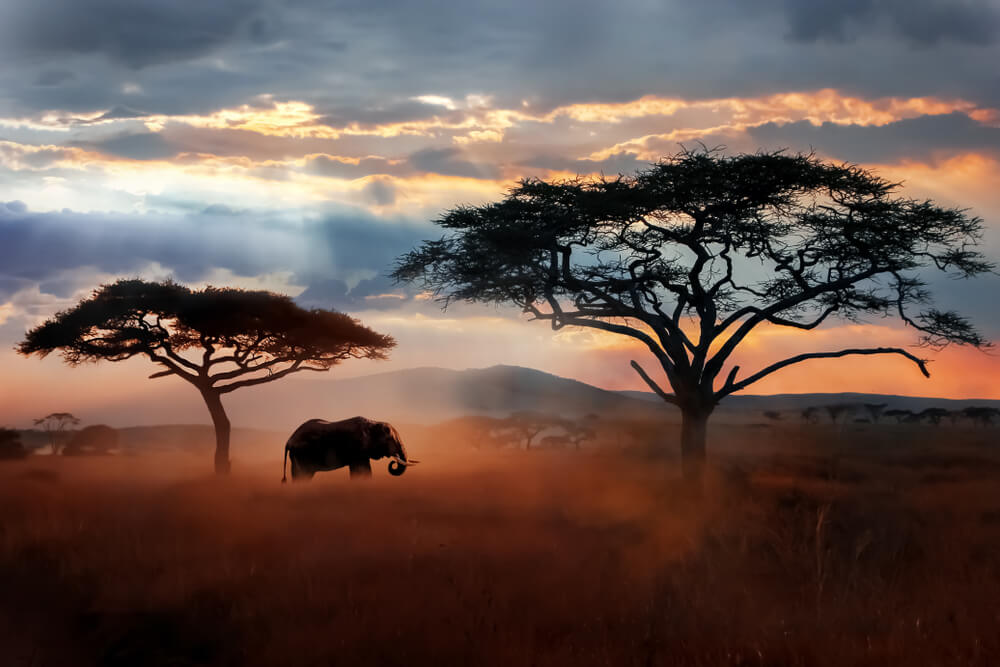Among Africa’s many hunting destinations, Tanzania can be considered the one to rule them all. Found within Africa’s Great Lakes region and bordering other game hunting locations, like Zambia and Mozambique, Tanzania is home to a vast variety of African hunt species from the Big Game favorites to a selection of antelope and small game options.
But how did Tanzania become the famous destination it is today, and how did it lure in the hunters of yore, just like it seems to do today? Maybe it’s what it has to offer, perhaps a bit of that African magic, or maybe it’s just something we’ll never be able to put into words.
[DYNAMIC-BLOGTABLEOFCONTENT]
Key Takeaways
- Tanzania has had a storied history in the realm of famous African hunting
- Many a famous hunting figure got their start or made their name in the lands of Tanzania.
- Tanzania still offers one of the widest varieties of big game and African plains game.
- There is a strong link between the game hunting industry and conservation efforts.
- This East African country continues to draw hundreds of hunters every year.
From Tanganyika to Tanzania: A brief history of Africa’s richest game hunting territory
The hunting safari in Tanzania concept can be traced back millions of years to the earliest known existence of our human ancestors in the region. While the African hunt of today is built on pride and sport, its origins lie in subsistence and survival.
Once the Ugandan Railway was completed around 1900, access to East Africa was greatly increased, and as more people were able to access this destination, the knowledge of Tanganyika’s game animals and its impressive trophies began to gain traction. As areas of East Africa became colonized by the British and German nations, it was soon agreed that the Tanzania hunting safari offering could be turned into a lucrative source of income. In 1909, a £50 permit entitled the holder to the following species:
- 2 x Buffalo
- 1 x Eland
- 6 x Oryx
- 1 x Greater Kudu
- 10 x Topi
- 229 x Other Antelope
- 2 x Hippo
- 22 x Zebra
- 4 x Waterbuck
- 4 x Lesser Kudu
- 26 x Hartebeest
- 86 x Colobus Monkeys
- Unlimited Lion *
- Unlimited Leopard *
* At the time, lions and leopards were considered vermin due to their killing livestock, soldiers, and townspeople.
Another contributor to the early success and popularity of the Tanzania hunting safari was the accessibility provided by the nearby archipelago of Zanzibar.
This collection of small islands became a major gateway into Tanzania thanks to the slave trade, which provided aides and porters to those entering the country to experience an African hunt. Entry through this manner was often considered safer and more reliable as local tribes and their chiefs could be reimbursed (or bribed) with goods brought through by European visitors. This traffic also built a reliable source of income for the merchants who plied their products and services throughout the area’s ports and Stone Town.
In 1964, the then-named Tanganyika Wildlife Department was founded to regulate and formalize the hunting industry in Tanzania. From 1973 to 1978, Tanzania implemented a ban on all game hunting activities within the country. Once the ban was lifted, the industry was overseen by the Tanzania Wildlife Corporation, which in 1988 transferred control to the Department of Wildlife. Today, all hunting safaris in Tanzania are controlled and guided by the Tanzanian Wildlife Management Authority (TAWA).

Why a Tanzania hunting safari?
What influenced this country to become a top game hunting destination in old Africa?
Tanzania’s popularity as a hunting destination could arguably have been influenced by what was called the “Scramble for Africa.” During this time, Western and European nations were colonizing their share of the continent, focusing on East Africa. These “great white hunters,” as they became known, brought with them the idea of sport hunting and the need to derive funds that would support the expansion and protection of their colonies.
The sport of big game hunting carried an air of privilege and a taste of the aristocracy, as it was only available to the rich and connected. To them, hunting in Tanzania was an exotic excursion, an expedition into dark Africa, traveling through “a whole new world.” Tanzania’s hunting allure came as much from its vast trophy species as it did from the above. Stories of man-eating Lions, big tusker Elephants, and animals previously only seen in scientific textbooks or journals were suddenly accessible to those with the desire and the means to meet them in reality. News of one’s successful hunting safari in Tanzania, usually accompanied by a select trophy photograph or portrait, was a much bigger affair than it is in today’s world of fast media and served as a massive interest and influence to those back home.
The prominent drawcard to Tanzania’s hunting grounds was the animals, still as popular and prosperous, which served as both a challenge and reward to those who tested their skills – and sometimes their limits – in Tanzania’s wild lands. 100-pound tuskers are still very much a thing, as are prized male Lion trophies and a variety of exotic African plains game that are sure to excite just as much now as they did then.
Notable figures of the African hunt and Pioneers of the hunting safari in Tanzania
Theodore Roosevelt
The former American president’s famous hunting safari in Tanzania during 1909 and 1910 was as much for scientific study and exploration as it was for sport. Joined by his son Kermit, the two men bagged a host of African hunt gems, including numerous Lions, Elephants, Rhinos, buffalo, and Hippos, as well as a vast list of African plains species, from antelopes to Warthogs. Birds, reptiles, and even fish were also part of this expedition’s tally.
While today some have criticized this hunt for its excess, Theodore and his son were accompanied by hundreds of staff such as porters and other camp staff such as guides, soldiers or protection officers, and even local naturalists who served as valuable sources of information and counsel during the 9 months of this party’s traveling through Tanzania and neighboring countries.
This hunt put Tanzania on the map for many future hunters and tourists alike.
Frederick Selous
An inspiration to man hunters throughout history, Frederick Selous is arguably an embodiment of the saying “man, myth, legend.” Despite being remembered for the sport hunting aspect, another focus of Selous’ hunts was scientific documentation and journaling. Selous was known for providing both private collectors and British museums with numerous specimens, observations, and other knowledge available only to those who would’ve walked the same paths as him.
Today, his legacy lives on through the 21,000 square mile Selous Reserve in Tanzania, where game hunting is still allowed alongside photo tours and general game viewing activities. His name has also been given to animal species such as the Sitatunga’s (Tragelaphus spekii selousi) scientific name and the Selous mongoose.

Ernest Hemingway
The respected author saw two significant safaris during his time spent in Africa, the first in 1933 and the second in 1954. Inspired by Theodore Roosevelt, Hemingway tracked his way across Tanzania’s famed Serengeti, where he hunted Lions, Elephants, and multiple African plains game species. The experiences were the inspiration for novels and short works such as Green Hills of Africa and The Snows of Kilimanjaro.
A fun fact related to his Tanzania hunting safari expeditions is that he survived two plane crashes while traveling the continent. One of these crashes resulted in newspapers running his obituary, when in fact the man was alive and well!
David Livingstone
The legendary missionary and abolitionist may be most fondly known for his role in bringing Christianity and medicine to East Africa. However, David Livingstone also had a fondness for African hunting, whether for sport, subsistence, or self-defense. Throughout his travels, David hunted antelope, giraffes, and zebras, as well as lions known for attacking villagers and livestock. He later criticized trophy hunting unless conservation was also taken into account, writing about the importance of preserving both animal populations and the environment.
Preservation for the Future: Conserving the Trophies of Tomorrow
The Tanzania hunting safari might’ve looked a lot different today if it weren’t for the country’s conservation practices and strictly regulated game hunting industry, which has conserved animal populations to the stable and healthy levels we have today. The days of unlimited Lion hunting are far in the rearview, and today’s strict quotas and guidelines ensure future generations will be able to walk in the same footsteps as the famous bygone hunters.
Hunting and Conservation in Tanzania: A Working Relationship between Beast and Man
Income and funds derived from permits and other fees get largely funneled back into TAWA’s anti-poaching programs and community initiatives, as well as other activities like park patrols, habitat conservation, and maintenance work.
Hunting outfitters and other related service providers serve as a lucrative and much-needed source of jobs and training. Those within the immediate community are employed and offered opportunities for community improvement, education, support, and funds for grass-roots projects, resulting in a sense of community pride and involvement in something greater than themselves.
All hunting safaris in Tanzania subscribe to fair chase principles, and a TAWA guide or representative must be present on all hunts to guarantee that all guidelines and processes remain legal and ethical.
These measures may have been laughed at by those who once headed into their African hunt driven by pride and perhaps greed. But Tanzania’s conservation efforts are safeguarding a sometimes fragile industry’s future in a time when so much of our natural world has been plundered.
In the modern era of hunting in Tanzania, the more things change, the more they stay the same
Game hunting in Tanzania has come a long way from its subsistence roots and the gilded age of colonialism. The changes and growth seen in present-day Tanzania have been learned through years of trial and error, experience, and most of all the history of their own country and others that find the hunting industry a major contributor to their economy.
Quotas
The “license” afforded to early hunters, as mentioned previously, wouldn’t be possible or accepted in today’s times. Currently, Tanzania’s Elephant quota is set at 50 (or 100 tusks), with hopes of increasing this figure to 100 Elephants, while the numbers for both Leopard and Lion have been increased, but are still well managed. These quotas can change on a year-to-year basis depending on factors like population size, changes in climate or habitat, and even hunting traffic.
Accommodation
Early accommodation options for those on their African hunt would be considered primitive by today’s standards. While bush camps are still the most common option, today’s camps have amenities such as electricity, satellite connectivity, and private camps with comfortable beds and linen, as well as laundry services. Apart from these bush camps, Tanzania offers luxury lodges and even private houses within the hunting concession or hunting area.
Costs
A standard factor of hunting in Tanzania (and any other destination) is the daily rate. In the early days, this fee was paid to merchants and slave owners to compensate them in return for the hiring of slaves, horses, wagons, and other materials needed for the trip. Similarly, in today’s era, this rate covers the cost of hunting guides, food, and transport, and access to the hunting area.
The Experience
One thing that has probably stayed the most consistent over time is the experience of a Tanzania hunting safari. The same wonder and wilderness await you now as much as it did for those hundreds of years ago. Whether you’re experiencing the “Brain of Africa” for the first time or making a repeat visit, Tanzania is sure to cast its spell and have you wanting to come for more.

Frequently Asked Questions
Is hunting in Tanzania suited to Beginners and Intermediates?
Tanzania offers a variety of animals and packages suitable for all levels of hunting ability. Those beginning their hunting career or testing their abilities are recommended to take the shorter permit durations, offering various plains species such as antelopes, Zebras, Warthogs, and small cats.
What Type of Hunting Packages are available when hunting in Tanzania?
Tanzania classes their permits into 10, 14, and 21-day hunts. These permits stipulate which animals may be hunted, so check which permit matches your needs and discuss options with your outfitter. Package hunts can be arranged for a combination of game targets.
Does hunting in Tanzania still produce the same quality Trophy Specimens as years ago?
Tanzania continues to produce high-quality trophy specimens, especially in Lions, Leopards, Cape buffalo, and Elephants, as well as common and exotic antelope varieties.

Conclusion
Africa is home to many great game hunting destinations, but Tanzania stands out from them all for its rich history and place of honor among hunting’s greatest figures. From the country’s days as a land of unexplored wilderness to its wide popularity today, Tanzania has always and will continue to deliver exceptional hunting adventures and trophy opportunities for those who choose to step onto its soil.
Explore More World-Class Hunting Destinations
If Tanzania’s rich history and legendary trophies have you dreaming of your next African adventure, don’t stop here. Explore equally iconic game hunts in Zambia, known for its remote concessions and powerful Cape buffalo; or experience the wild remoteness of Mozambique, where sable, leopard, and crocodile hunts dominate. For those seeking plains game variety, our South Africa packages offer a more accessible entry into African hunting—without compromising on trophy quality.
→ Compare our hunting destinations and find the safari that fits your skill, species goals, and budget.
Author: A. Baker
